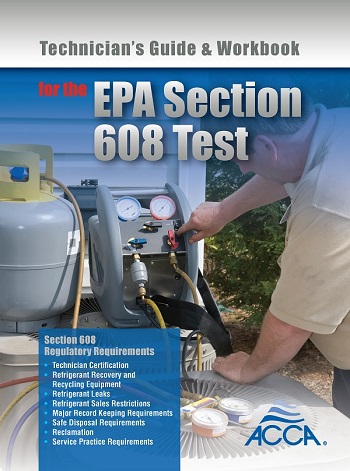The only fluids circulating within a refrigeration system should be refrigerant and oil. Any other fluids contained within the system may reduce its capacity and possibly cause harm to the system. One common contaminant that can enter a system is atmospheric air. Air contains nitrogen, oxygen, and moisture, all of which are harmful to a refrigeration system.
When air is contained in a system it will become trapped in the condenser and will not condense. It will take up space, causing less surface area for the refrigerant to condense.
This will cause the high-side pressure to elevate, creating further problems such as higher discharge temperatures and reduced system capacity. The oxygen and moisture component of the air will also react with the oil.
When heated sufficiently, it will form acids that can deteriorate the windings of the compressor’s motor and cause metal corrosion and sludge to develop within the system.
Air can enter a refrigeration system in one of two ways. It can enter a system through poor service practices such as not purging refrigeration hoses while working on a system or not completely degassing a system after it has been open while replacing a component or repairing a leak.
Air can also enter a system if a refrigerant leak has developed on the low side of the system and enough refrigerant escapes to cause the low side to run below atmospheric pressure. If refrigerant is then simply added to the system without addressing air pulled in, it will remain trapped in the system and cause future problems.
If a service technician encounters a system running at elevated high-side pressures, one of the causes could be noncondensables trapped in the system. This is not a very common occurrence but it is possible.
Before thinking that noncondensables are the cause of a system problem, a technician should look at the more common causes of elevated discharge pressures.
Common causes of elevated high-side pressure on systems using an air-cooled condenser are dirty coils, insufficient airflow across the condenser, and recirculation of condenser air. These possibilities should be investigated first before looking at noncondensables as the cause.
If a technician does suspect the cause of a system problem is noncondensables trapped in the system, the following procedure can be used to determine this on a refrigeration system that has an air-cooled condenser.
• Determine the type of refrigerant in the system.
• Electrically disable the compressor and allow the condenser fan to operate.
• Attach a temperature probe to both the discharge line and liquid line.
• Place a third temperature probe to measure the temperature of the air entering the condenser.
• Connect a pressure gauge on the system to measure the pressure of the refrigerant in the condenser.
• When all three temperature probes - discharge line, liquid line, and air entering the condenser - are at the same temperature, record the pressure of the refrigerant in the condenser.
• Using a pressure-temperature chart, convert the measured pressure to its saturation temperature.
• The converted temperature should be within a few degrees of the measured discharge, liquid, and air entering temperatures.
• If the converted temperature is higher than the measured temperatures by more than a few degrees, there are noncondensables in the system that need to be removed.
Publication date: 1/08/2006







